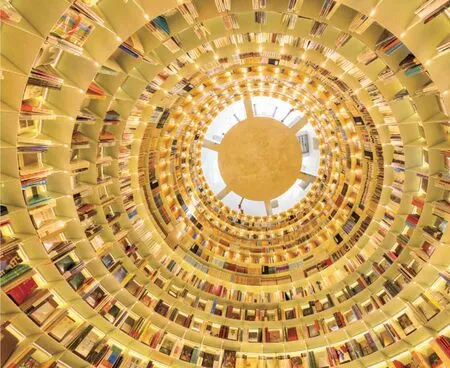3 UNIQUE INDUSTRIAL TRANSFORMATIONS
2022-10-15
Abandoned industrial sites are typically transformed into parks,museums,and offices.The following are examples showing how several vacant old buildings with interesting(or bloody) histories have been given new purposes.

Librairie Avant-Garde—Nanjing,Jiangsu
A new landmark based in Nanjing’s Garden Expo Park,the towering cylindrical bookstore is housed inside ten interconnected cement silos that used to store crushed stones back when the site housed a cement factory built in the 1970s.It was converted in 2018 as a gesture of reconciliation for the scarring of local mountains due to limestone extraction.The silos are each decorated to reflect a different theme,such as art,travel,literature,and social science,and are connected by glass corridors.The interior walls are painted white to imitate the texture of paper as well as symbolize a brand new life for the immersive bunker,which now welcomes visitors with books,exhibitions of local art,and a cafe.
1933 Old Millfun—Shanghai
This eerie Art Deco complex was once the largest slaughterhouse in the former International Concession of Shanghai,designed by British architects and named after its year of construction.It has been repurposed since 2006 as a hub of fashion,art design,and entertainment.Spiral staircases,bridged walkways,twisting ramps,and decayed buildings all reveal its unique industrial heritage.The narrow spiral staircases,now a popular photo backdrop,were originally built as escape routes for workers in case the animals panicked and stampeded during slaughter.The 8-meter-tall Sky Theater on the fourth floor,made of reinforced glass,now hosts parties,performances,and even wedding ceremonies.The inside temperature stays cool as the 50-centimeter thick walls and spacious interior helps condition the air.
Textile Culture and Arts Exhibition—Jinan,Shandong
The former Fourth National Cotton Factory of Jinan,established in 1932,was renovated in 2019 into a center of exhibition,sales,and entertainment that retains the collective memory of the once-thriving textile industry of the city.In an exhibition space,1,500 suspended weaving shuttles and about 5,000 spindles arranged in rectilinear grids on the sides of walls invite visitors to explore the factory’s traditions and historical roots.DIY workshops,a textile library,cultural exchange salons,and a marketplace for cultural and creative products are offered to help visitors get a deeper
understanding of traditional and modern weaving and dyeing culture.—Y.T.
